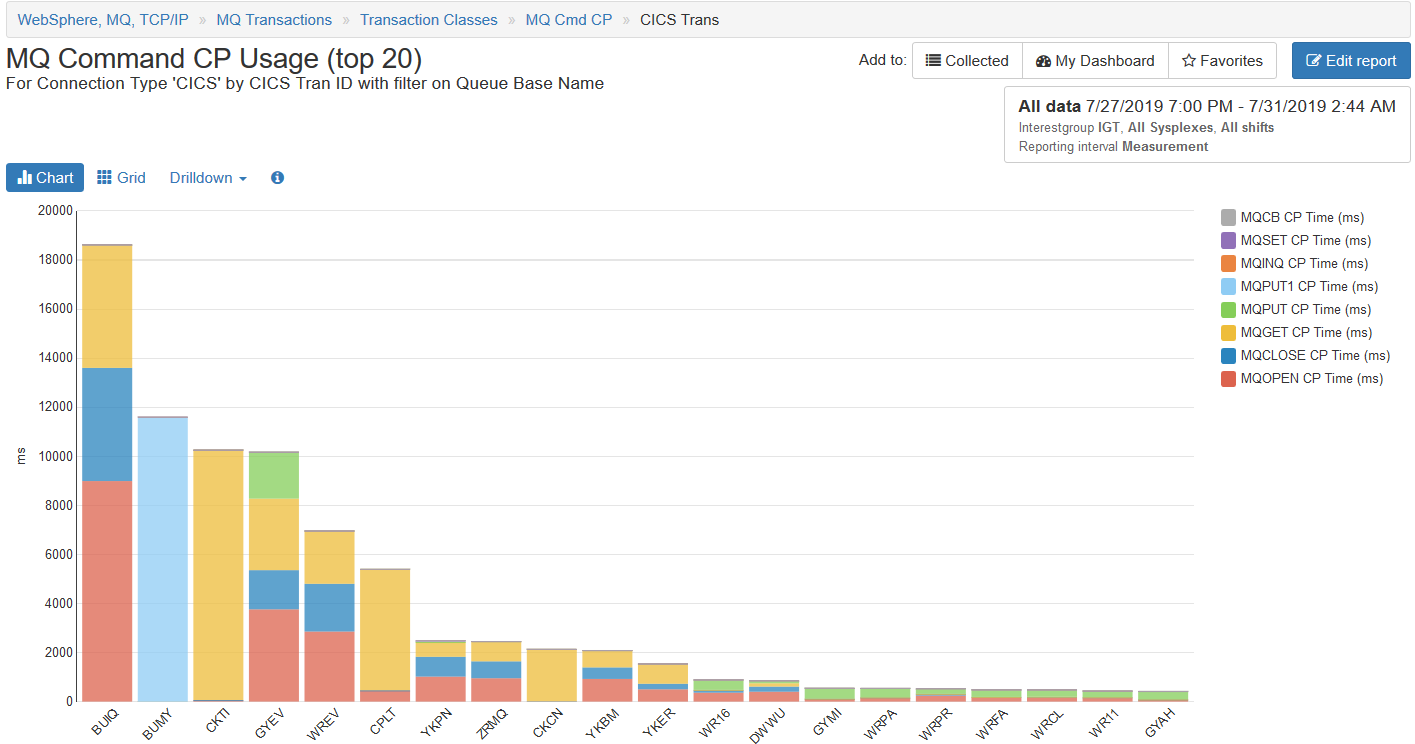IntelliMagic Vision release 9.22.0 provides capabilities to enable effective analysis of the valuable but challenging data source of SMF 116 MQ Accounting Data.
IBM MQ is a critical component in the z/OS infrastructure. However, z/OS system managers often lack visibility into the operation and performance of MQ. What they need includes:
- Visibility into MQ data to profile the workload
- An easy method to investigate application problems related to MQ
- Automated detection of issues with the MQ buffer pools, logging, and virtual storage
- Information to carry out performance tuning of the MQ infrastructure
- Assessment of MQ buffer manager metrics against best practice thresholds
- Identification of a MQ workload baseline and indication of significant MQ workload changes
MQ is widely used across today’s z/OS environments. Its SMF data offers rich potential insights for managing and operating MQ. But there can be challenges to gaining visibility into, and deriving value from this data. One challenge is that reporting capabilities for MQ SMF data have often lagged those of other aspects of the z/OS infrastructure. Another challenge specific to MQ Accounting metrics is that generating these records is often considered to be too expensive, both in CPU overhead and SMF record volume.
With IntelliMagic Vision the bottom line is that it may be more feasible and beneficial to generate MQ Accounting data than you previously thought. IntelliMagic Vision can be a rich source of insights into the operation and performance of the MQ infrastructure. A starting point could be to generate this data on a periodic basis. Firstly, to establish a workload baseline. Secondly, to measure your own SMF data volumes and CPU overhead. And then proceed from there.
MQ Accounting Data
MQ Accounting (SMF 116) data provides detailed data on the operation of an MQ environment. This includes metrics such as CPU used, and elapsed time: total and by MQ component. This data can be analyzed by MQ queue name, by type of caller (e.g., CICS, IMS, batch), even down to calling transaction ID or job name. But a site can generate a huge volume of MQ Accounting data. The capabilities of existing tooling to process this data are very limited. However, this new IntelliMagic Vision release 9.22.0 provides capabilities to enable effective analysis of this valuable but challenging data source. IntelliMagic Vision now provides extensive reporting across numerous categories of MQ.
MQ command CP usage
One of the primary areas of interest from the MQ Accounting data is likely to be CPU usage. The example below shows the MQ command CP usage for CICS transactions.
Related resources
What's New with IntelliMagic Vision for z/OS? 2024.2
February 26, 2024 | This month we've introduced changes to the presentation of Db2, CICS, and MQ variables from rates to counts, updates to Key Processor Configuration, and the inclusion of new report sets for CICS Transaction Event Counts.
Viewing Connections Between CICS Regions, Db2 Data Sharing Groups, and MQ Queue Managers
This blog emphasizes the importance of understanding connections in mainframe management, specifically focusing on CICS, Db2, and MQ.
What's New with IntelliMagic Vision for z/OS? 2024.1
January 29, 2024 | This month we've introduced updates to the Subsystem Topology Viewer, new Long-term MSU/MIPS Reporting, updates to ZPARM settings and Average Line Configurations, as well as updates to TCP/IP Communications reports.
